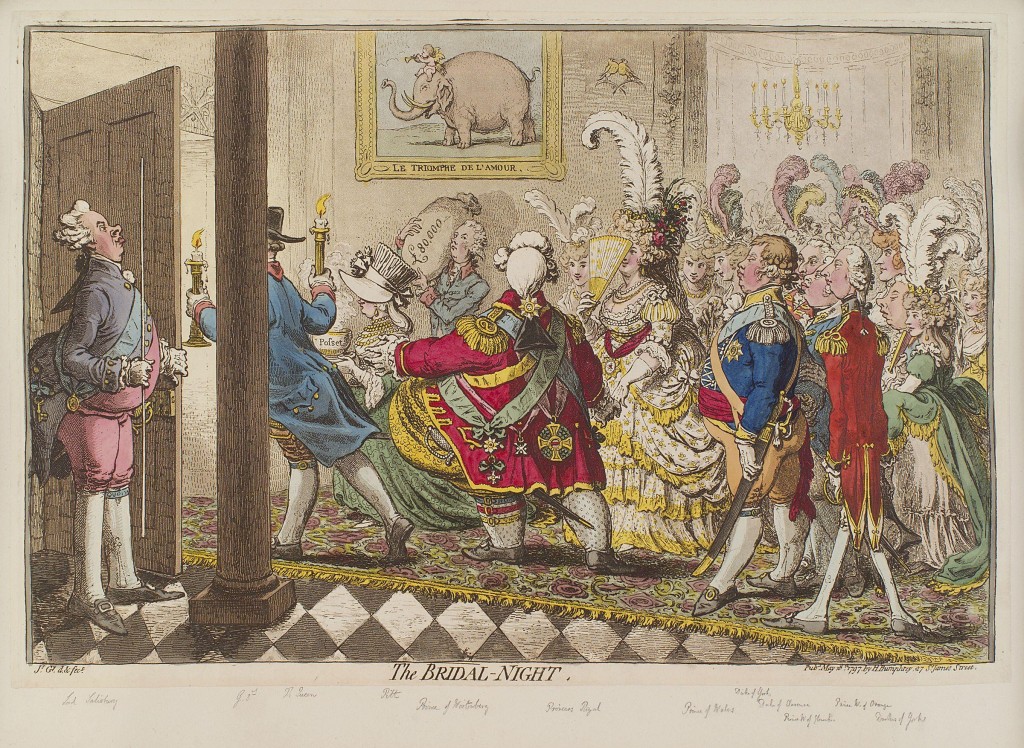Bored out of your mind with every TV talking head spending all day on the minutiae of today’s royal wedding? They never talk about the things I’m interested in, like explaining all the geegaws on the uniforms or how the glorious medieval Cosmati mosaic floor in Westminster Abbey’s sanctuary is packed with apocalyptic symbolism, or what was up with that one riderless horse bolting out of the procession (the horse was spooked by the crowd, dumped his rider and ran straight home; cavalryman was unharmed except in his dignity). For those of us who like our historical context in great gouts, here’s a little consolation.
First enjoy a couple of neat YouTube videos from the Historic Royal Palaces channel, one of the most consistently entertaining and well-maintained history-themed YouTube channels ever. This first one features food historian and leader of the HRP’s historic kitchens team Marc Meltonville talking about the history of royal wedding cakes.
[youtube=http://www.youtube.com/watch?v=sDNMa-oWGxM&w=430]
Next up is curator Dr. Joanna Marschner who discusses the past two centuries of royal wedding fashions. The dresses are from the Royal Ceremonial Dress Collection at Kensington Palace.
[youtube=http://www.youtube.com/watch?v=htSvZDvIf5I&w=430]
My personal favorite slice of royal wedding history, though, is this exhibit of biting Georgian satirical caricatures which took delight in mocking the marriages of George III’s daughters to their large German husbands. The exhibit marks the 250th anniversary year of George III’s coronation, and is appropriately hosted in Kew Palace, the family’s country retreat. Queen Charlotte, George III’s wife, died there, with her son the regent and future King George IV by her side holding her hand.
Kew Palace is also where the daughters of George III lived, often far longer than they would have wished. George and Charlotte kept their daughters as sheltered and homebound as possible, the King finding political pretexts to reject suitor after suitor, then the Queen wishing to have her daughters with her when their father descended into his famous madness.
Out of their six daughters, only three ever married. Charlotte, Princess Royal, was the youngest at 30, which wasn’t very young at all in 1797. She was the only to marry during George III’s lucid reign. Princess Elizabeth was 48 and Princess Mary 40 before they were finally able to get married and live their own lives. By then their brother George had been regent for years.
Those late-in-life marriages and the three unmarried sisters, Princesses Augusta Sophia, Sophia and Amelia were therefore ripe subjects for satirists.
James Gillray’s ‘The Bridal Night’, published in May 1797, depicts the marriage of Charlotte Princess Royal, the eldest daughter of George III, to Frederick Duke of Wurttemberg. Dubbed the “Bellygerant” and described by Napoleon, “that God had put him on earth to see how far skin could stretch…”, Gillray depicts Frederick as quite unfeasibly fat, and cheekily represents the wedding night with a cherub sat atop an elephant.
